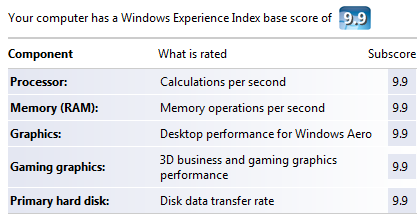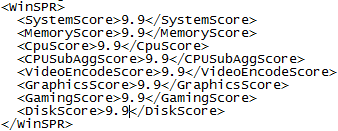The results of the Windows Experience Index are stored in an XML file that you can modify to spoof your score. Who wants to show off a 2.1 system? Let’s make that a 9.9 powerhouse.

- Navigate to C:\Windows\Performance\WinSAT\DataStore.
- Open up the most recent file in that folder. On Windows 8, edit the newest "Formal.Assessment" file. Make sure that your account has write access to that file. If not change the file permissions.
- Parse the file looking for the WinSPR entry. These are the items you want to edit. The maximum value you can use is 9.9.
 4. Save the file and you just turned your 2.1 system into a supercomputer.
4. Save the file and you just turned your 2.1 system into a supercomputer.

If you own a Google Chromecast streaming device, you can easily share a browser tab in Chrome browser or even your entire desktop. This can be very useful when presenting from your laptop or if you just want to watch something on a big screen that is only on your PC. The only requirement is you must be on the same network as your Chromecast...
Read More

If you are a fan of minimalist desktop experiences, hiding the desktop icons are an easy way to clean up the Windows interface. Instead of saving everything to your desktop, use the default profile folders such as downloads and documents. Actually hiding all the icons on your desktop is a very simple customization hidden in the right-click context menu. Just right-click on the desktop, select View...
Read More

Google security researchers have published details about a major security flaw found in the SSL protocol that is used to encrypt data transferred between your browser and a web server. SSL is typically used in situations where logon credentials are validated...
Read More

Enabling two-factor authentication is a great way to add an additional level of protection to your Microsoft account. Even if your password is stolen, your account is still protected because two-factor authetication requires an additional level of verification to log in. Microsoft calls their version of two-factor authentication "two-step verification" and it works by providing you with a random code...
Read More




